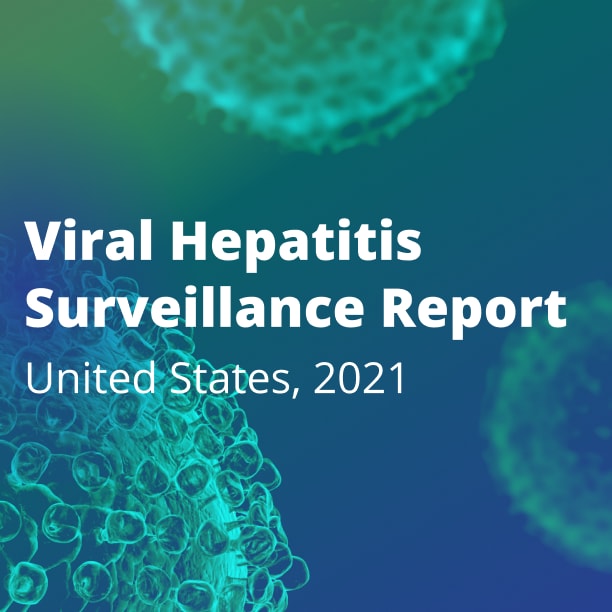2023 Viral Hepatitis National Progress Report Overview
The Centers for Disease Control and Prevention (CDC) strives to prevent viral hepatitis and eliminate disease and death caused by viral hepatitis. The Viral Hepatitis National Progress Report provides information on progress toward 2025 outcome goals for new viral hepatitis infections and viral hepatitis-related deaths, overall and for select key populations. In 2020, CDC modified the goals and associated targets from previous reports to align them with CDC’s Division of Viral Hepatitis 2025 Strategic Plan and the US Department of Health and Human Services’ Viral Hepatitis National Strategic Plan for 2021–2025.
The global COVID-19 pandemic began in March 2020 and continued to cause disruptions in access to medical care and routine public health activities during 2021. Pandemic-related stay-at-home orders suspended or delayed many routine healthcare visits and patients avoided seeking medical and preventative services, and a decline in testing for hepatitis C was identified. Furthermore, many health department staff routinely assigned to viral hepatitis case investigation and surveillance activities were reassigned to respond to the COVID-19 pandemic. The COVID-19 pandemic also had a profound impact on death with the overall age-adjusted death rates increasing during 2020 and 2021 compared to 2019. For these reasons, the numbers and rates of viral hepatitis cases and viral hepatitis-related deaths for 2020 and 2021 presented in this report should be interpreted with caution.1
Key Findings
Following several years of increase in the reported rates of hepatitis A, a second year of decline occurred in 2021. By the end of 2021, 14 of 37 states had declared an end to widespread and prolonged hepatitis A outbreaks associated with person-to-person transmission, primarily occurring among persons who use drugs and those experiencing homelessness.2 These outbreaks demonstrate the importance of surveillance to identify cases and vaccination to prevent and respond to hepatitis A.
New hepatitis B virus infections declined in 2020 and 2021. Although the two hepatitis B indicators for new infections met the annual target for 2021, it is difficult to determine to what degree the lower rates are attributable to true reductions in disease burden versus impact of the COVID-19 pandemic on access to healthcare, hepatitis testing, and health department capacity to perform viral hepatitis case investigations. The indicators for hepatitis B-related deaths did not meet the annual targets in 2021; however, rates of hepatitis B-related deaths may have been impacted by the increase in overall deaths during the COVID-19 pandemic. Continued efforts are needed to implement CDC’s new, expanded hepatitis B vaccination recommendations and improve appropriate testing and linkage to care.
While the COVID-19 pandemic also likely reduced detection and reporting of new hepatitis C virus (HCV) infections, the impact has been tempered by the introduction of a more sensitive hepatitis C surveillance case definition in 2020, which was designed to classify acute hepatitis C cases more accurately for surveillance. Increases in injection drug use related to the nation’s drug crisis have contributed to annual increases in new HCV infections. To promote health and reduce ongoing transmission, efforts must continue to connect all people experiencing cases of new or chronic hepatitis C to well-tolerated, short-course curative treatment, and connect people who inject drugs to harm reduction services, including syringe services programs and medication for substance use disorder treatment.
Continued efforts are needed to identify new and chronic infections and ensure all people with hepatitis C receive treatment. Death rates among non-Hispanic Black and non-Hispanic American Indian/Alaska Native (AI/AN) populations remain higher than the national rate, with little progress toward the 2025 target for non-Hispanic AI/AN persons since 2017.
References
- Centers for Disease Control and Prevention. Viral Hepatitis Surveillance—United States, Viral Hepatitis Surveillance – United States, 2021. Published August 2023. Accessed [date].
- Centers for Disease Control and Prevention. Widespread person-to-person outbreaks of hepatitis A across the United States. Atlanta, GA: US Department of Health and Human Services, CDC 2022.
